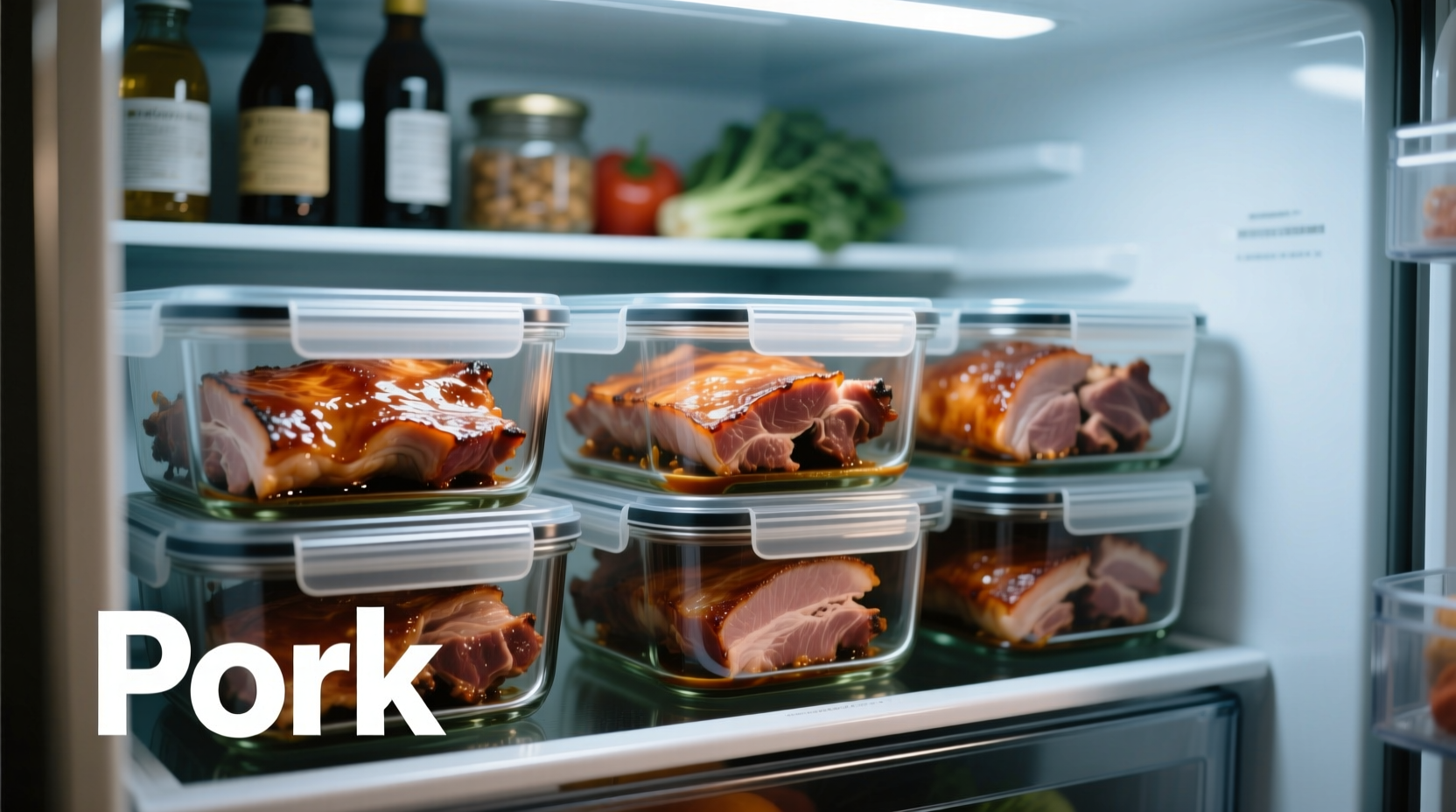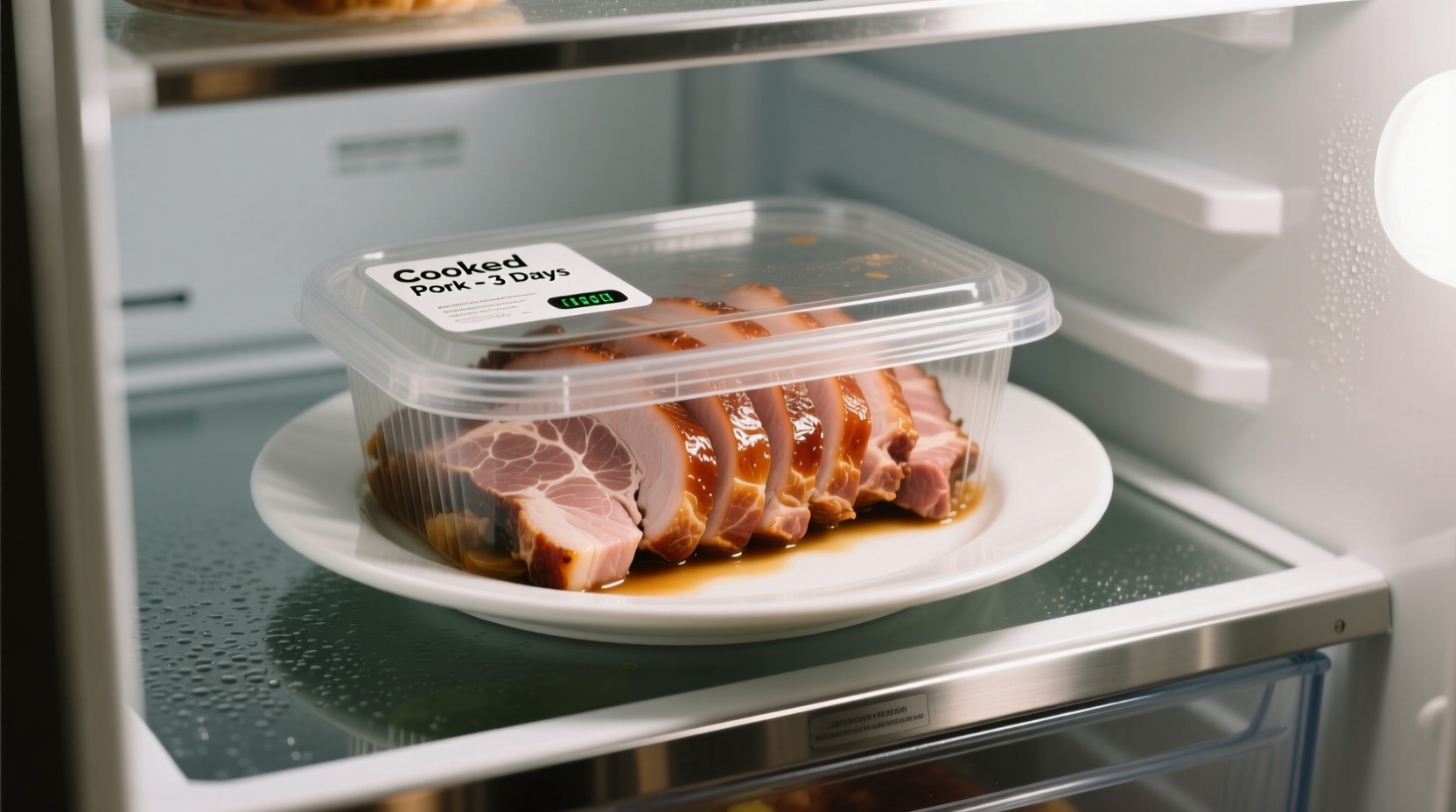Understanding exactly how long your cooked pork remains safe isn't just about avoiding waste—it's crucial for protecting your family's health. Food safety experts consistently emphasize that proper storage of cooked meats prevents dangerous bacterial growth that can cause serious illness.
Why the 3-4 Day Rule Matters for Cooked Pork
While that leftover pork chop or pulled pork might still look and smell fine after a week in the fridge, invisible bacteria like Staphylococcus aureus and Listeria monocytogenes can multiply to dangerous levels. The USDA's Food Safety and Inspection Service (FSIS) established the 3-4 day guideline based on extensive research into bacterial growth rates in cooked meats stored at proper refrigerator temperatures.
"Many people don't realize that the danger zone for cooked foods begins much sooner than they expect," explains food safety researcher Dr. Elizabeth Mitchell. "After day four, the risk of foodborne illness increases significantly even if the food appears normal."
Proper Storage Techniques That Maximize Safety
How you store your cooked pork directly impacts its safe shelf life. Follow these evidence-based methods:
- Cool quickly: Divide large portions into shallow containers (no deeper than 2 inches) to cool faster—within 2 hours of cooking
- Air-tight containers: Use sealed containers or heavy-duty aluminum foil to prevent moisture loss and cross-contamination
- Refrigerator temperature: Maintain your refrigerator at 40°F (4°C) or below—use a thermometer to verify
- Placement matters: Store on middle or lower shelves, never in the door where temperatures fluctuate

When Cooked Pork Goes Bad: Critical Warning Signs
Don't rely solely on the calendar—always check for these spoilage indicators before consuming leftovers:
| Sign | Fresh Cooked Pork | Spoiled Cooked Pork |
|---|---|---|
| Smell | Mild meat aroma | Sour, ammonia-like, or unpleasant odor |
| Texture | Firm, moist | Slippery, slimy film |
| Color | Pink to grayish-white | Dull, gray, or greenish tinge |
| Taste | Normal flavor | Sour or "off" taste (do not taste to check!) |
| Meat Type | Refrigerator (40°F or below) | Freezer (0°F or below) |
|---|---|---|
| Cooked pork chops/roasts | 3-4 days | 2-3 months |
| Cooked ground pork | 3-4 days | 2-3 months |
| Cooked ham (whole) | 5-7 days | 1-2 months |
| Cooked sausage | 3-4 days | 2-3 months |
Special Circumstances That Shorten Shelf Life
Certain factors can reduce cooked pork's safe storage time below the standard 3-4 days:
- Sauces and marinades: Pork in creamy sauces spoils faster than plain cooked pork
- Temperature fluctuations: Opening the refrigerator frequently raises internal temperature
- Initial cooking temperature: Undercooked pork (below 145°F internal temperature) starts with higher bacterial counts
- Handling practices: Using contaminated utensils or hands during storage introduces bacteria
"The 3-4 day rule assumes perfect storage conditions," notes food microbiologist Dr. Carlos Mendez. "In real-world kitchens with frequent refrigerator openings and varying temperatures, I recommend consuming cooked pork within 3 days for maximum safety."
Safe Reheating Practices for Leftover Pork
Proper reheating is your final safety checkpoint:
- Heat to 165°F internal temperature (use a food thermometer)
- Add moisture when reheating to prevent drying out
- Only reheat the portion you'll consume immediately
- Never reheat leftovers more than once
Freezing Cooked Pork for Longer Storage
When you can't finish cooked pork within 3-4 days, freezing extends safety significantly:
- Portion into meal-sized containers
- Remove as much air as possible from packaging
- Label with contents and date
- Consume within 2-3 months for best quality
Thaw frozen cooked pork safely in the refrigerator overnight, not at room temperature. Never refreeze thawed cooked pork unless it was reheated to 165°F first.
Common Mistakes That Risk Food Safety
Avoid these dangerous practices that compromise cooked pork safety:
- Leaving cooked pork at room temperature longer than 2 hours (1 hour if above 90°F)
- Storing leftovers in deep containers that cool slowly
- Relying solely on smell to determine safety (pathogenic bacteria often don't produce odors)
- Using the same utensils for raw and cooked meat without proper cleaning
According to the Centers for Disease Control and Prevention (CDC), improperly stored leftovers cause approximately 1 million foodborne illness cases annually in the United States. Following proper storage guidelines significantly reduces this risk.











 浙公网安备
33010002000092号
浙公网安备
33010002000092号 浙B2-20120091-4
浙B2-20120091-4